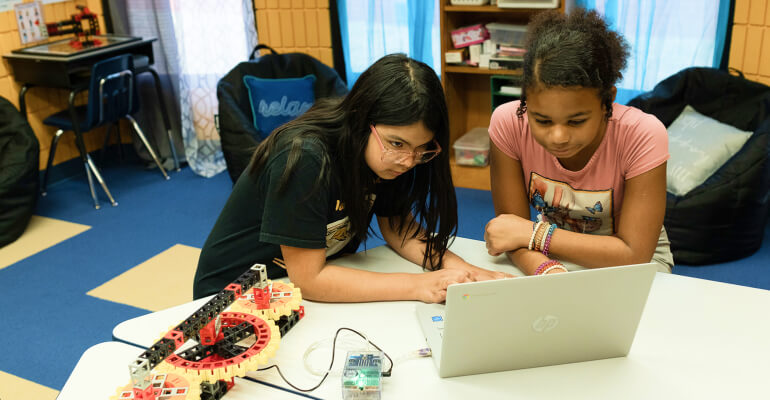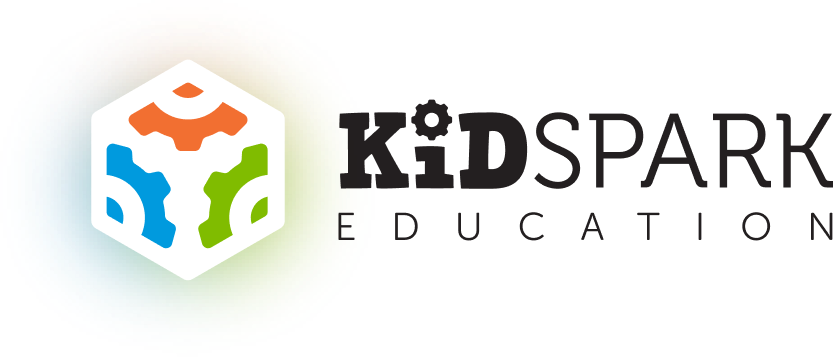
As STEM education becomes increasingly vital for students’ success in a rapidly evolving technological world, many elementary and middle schools are looking to incorporate more robust computer science and robotics programs into their curricula.
For educators and administrators, it can be a challenge to find high-quality STEM and robotics programs at the elementary and middle school levels that help develop students’ critical thinking, problem-solving, and technical skills from a research-based approach.
In this article, we take a look at some options for teachers and administrators seeking to launch or expand their computer science and robotics offerings to help lead the next generation of STEM innovators!
The Importance of Computer Science and Robotics in STEM Curricula
Computational thinking and coding are an important part of a well-rounded STEM curriculum. According to the most recent State of Computer Science Education report, over 40 states have curriculum standards or requirements in place to teach computer science in kindergarten through eighth grade, and 50 governors have committed to expanding computer science education across all of K-12 education in their respective states.
With the rapid expansion of these modern STEM curriculum standards, it’s not surprising that more and more schools are looking for comprehensive STEM programs to teach computer science and robotics at the elementary and middle school levels.
With the rapid expansion of these modern STEM curriculum standards, it’s not surprising that more and more schools are looking for comprehensive STEM programs to teach computer science and robotics at the elementary and middle school levels.
Why is coding so important to STEM education?
As early as 1980, researchers were studying computational thinking in young students. Seymour Papert, a pioneer of computer science, noted in his book Mindstorms that “learning to communicate with a computer may change the way other learning takes place.”
Since then, the necessity for bringing computational thinking (CT) to K-12 curricula has been recognized by the federal government, with a 2018 report identifying computational literacy as a vital pathway to success in STEM education. From this, the objective to “make computational thinking an integral element of all educational activities” was created.
How Kid Spark Education can help bring Computer Science and Robotics to Your School
Kid Spark Education is a nonprofit organization dedicated to providing comprehensive STEM programs and equitable access to them. They provide an all-in-one solution to STEM programming by including:
- Instructional Curriculum Materials: complete lesson plans, grading rubrics, student workbooks, and instructional guides to assist both educators and students.
- Professional Learning Tools for Educators: online educational resources for teachers so that they can feel confident in their STEM instruction.
- Physical Labs for Students: reusable components for every lesson plan and design challenge all located in one organized bin. From robotics to engineering, you’ll find everything you need for fun, hands-on STEM activities.

What’s included in Computer Science and Robotics Curriculum
Kid Spark’s computer science and robotics curriculum consists of three units of instruction that comprise 16 lessons for a total of over 40 hours of classroom time.
The curriculum is thoughtfully aligned with the most common state and national standards, including the Computer Science Teachers Association (CSTA) standards for computer science.
Within Kid Spark Education’s elementary and middle school STEM curriculum are computing concepts such as:
- Input sensors – ANALOG and DIGITAL inputs
- Conditionals – IF and IF/ELSE statements
- Loops – REPEAT and WHILE loops
- Variables – INTEGER and BOOLEAN expressions
- Functions
In addition to these core computing concepts, each unit of instruction includes an open-ended design and engineering challenge so students can apply their learning to create custom solutions.
This encourages students to be creative and use their newfound STEM knowledge for real-life applications. In addition to the teaching curriculum, design challenges, and lab supplies, each unit includes a student assessment to measure attainment and comprehension.

Kid Spark’s Computer Science and Robotics Lab Kits
The STEM Pathways Lab provides hands-on learning resources to build both engineering structures and robotics. With a combination of hardware and software, students can add physical input sensors and output modules to their design process and control them using code they’ve written.
At the center of the hardware is the Spark:bit robotics controller that is based on the micro:bit physical computing device. The Spark:bit includes onboard features such as a speaker, microphone, compass, thermometer, accelerometer, and LEDs. It also has eight external input ports and four external outputs. These are used with the following programmable input sensors and output modules also included in the STEM Pathways Lab:
INPUTS
- Bump sensor to detect when a button is pressed
- Light sensor to detect the amount of light present
- Infrared (IR) receiver and transmitters to detect the absence or presence of obstacles
- Angle sensor to detect the rotation
OUTPUTS
- Motor module to move the mechanism
- Light module consisting of red and green LEDs
The Spark:bit is programmed using Microsoft MakeCode which is a free online coding environment that uses drag-and-drop, block-based programming. Since MakeCode runs in a browser or as a web app, it’s compatible with almost all student devices including Chromebooks and notebook computers.
Kid Spark Education has also embedded step-by-step tutorials into MakeCode so students follow along and can see examples of sample code and engineering mechanisms. As students advance, MakeCode provides the option of transitioning to text-based programming languages such as JavaScript and Python.

Bring Kid Spark Lab Kits to Your Class!
Are you interested in exploring the robust world of computer science and robotics with your students?
With Kid Spark’s comprehensive STEM curriculum, you’ll find everything you need to bring engaging computer science and robotics to the classroom. To learn more, connect with a Kid Spark specialist today.






